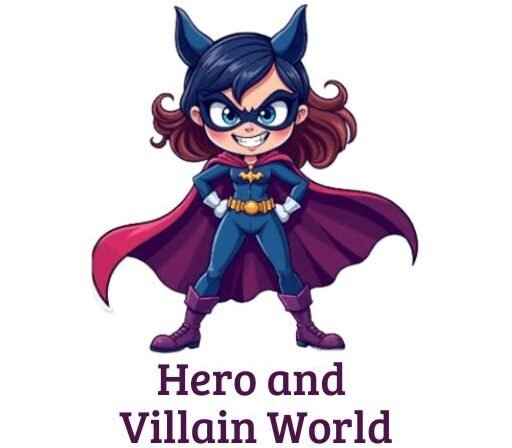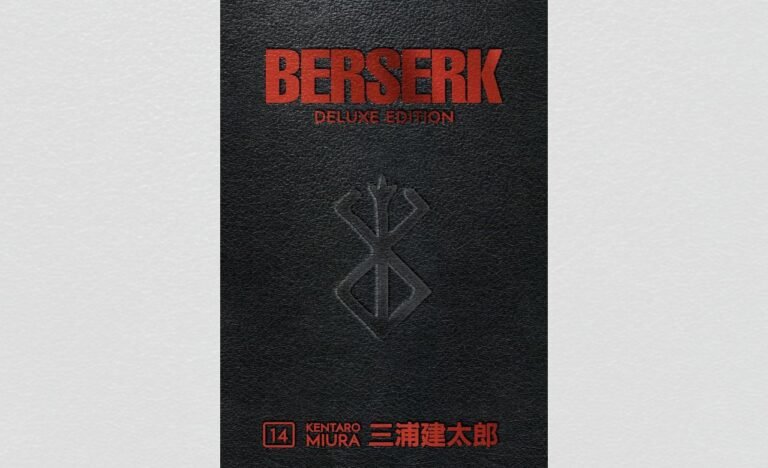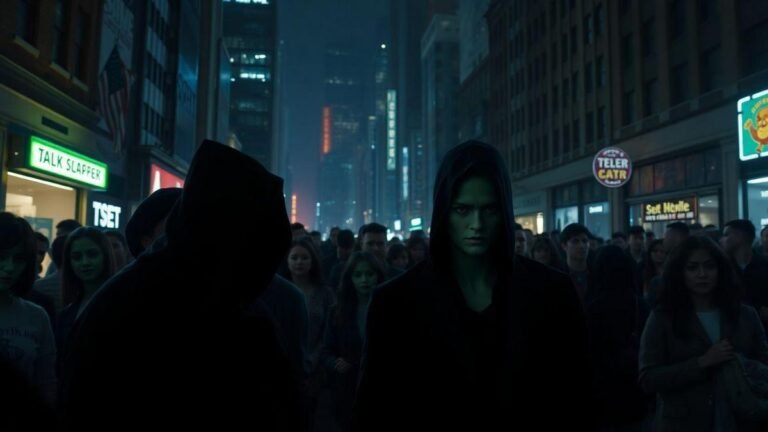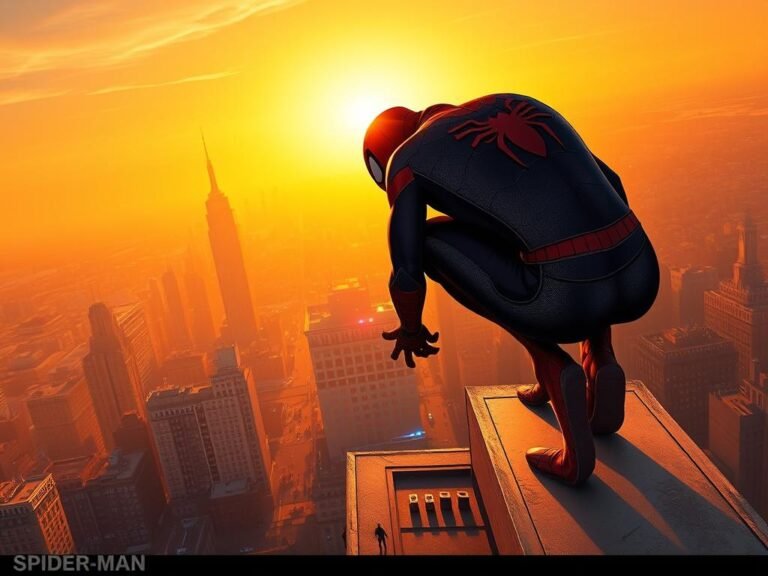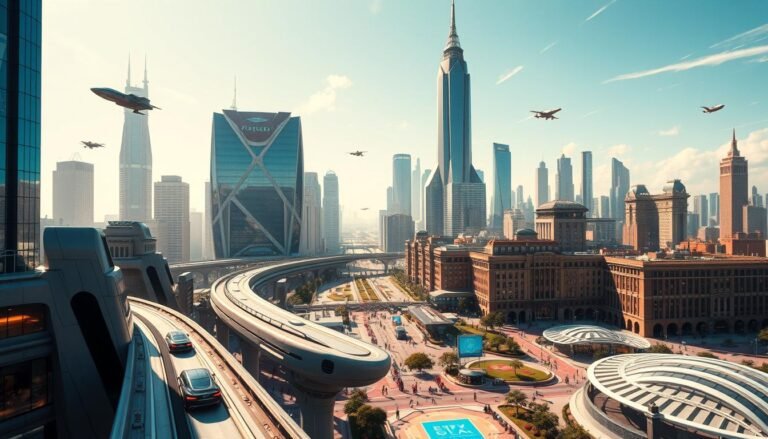Dark Nights: Death Metal – The Lasting Consequences for the DC Multiverse
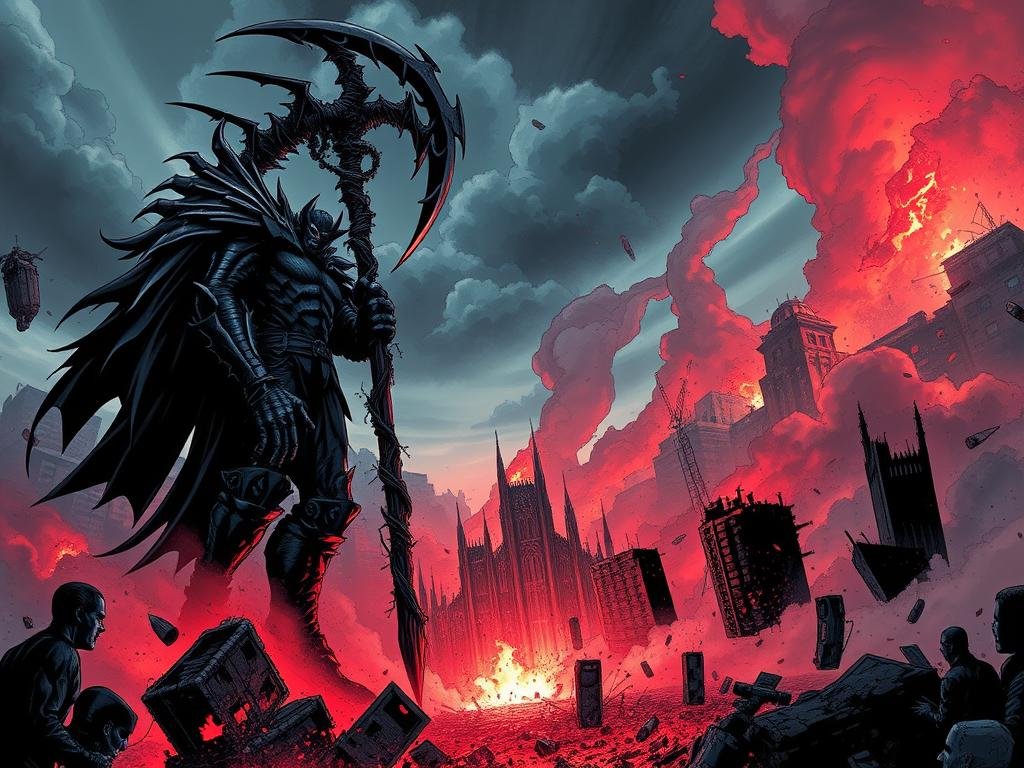
Comic fans, prepare for an epic journey through the most mind-bending DC Comics event that redefined the multiverse. Dark Nights: Death Metal wasn’t just another crossover – it was a seismic shift that challenged everything we thought we knew about superhero storytelling.
As a long-time DC enthusiast, I’ve witnessed countless universe-changing events. Yet, the Dark Nights: Death Metal consequences DC storyline stands out as a transformative moment that rewrote the rules of cosmic storytelling. Scott Snyder and Greg Capullo crafted a narrative that went beyond traditional comic book boundaries.
This DC Comics event did more than just shake up characters – it completely reimagined the multiverse’s fundamental structure. From the darkest corners of alternate realities to the most heroic moments of redemption, Dark Nights: Death Metal promised – and delivered – a radical reimagining of the DC universe.
The story blended cosmic horror, superhero action, and mind-bending multiversal stakes into a single, explosive narrative. Readers were taken on a journey that challenged their understanding of heroism, reality, and the very fabric of storytelling itself.
Introduction to the Dark Metal Saga’s Epic Conclusion
I’ve been following the DC Comics event that redefined the multiverse, and Dark Nights: Death Metal stands as a monumental achievement in comic book storytelling.
This epic series brought together the legendary creative team of Scott Snyder and Greg Capullo, marking the culmination of a five-year journey through the Dark Multiverse.
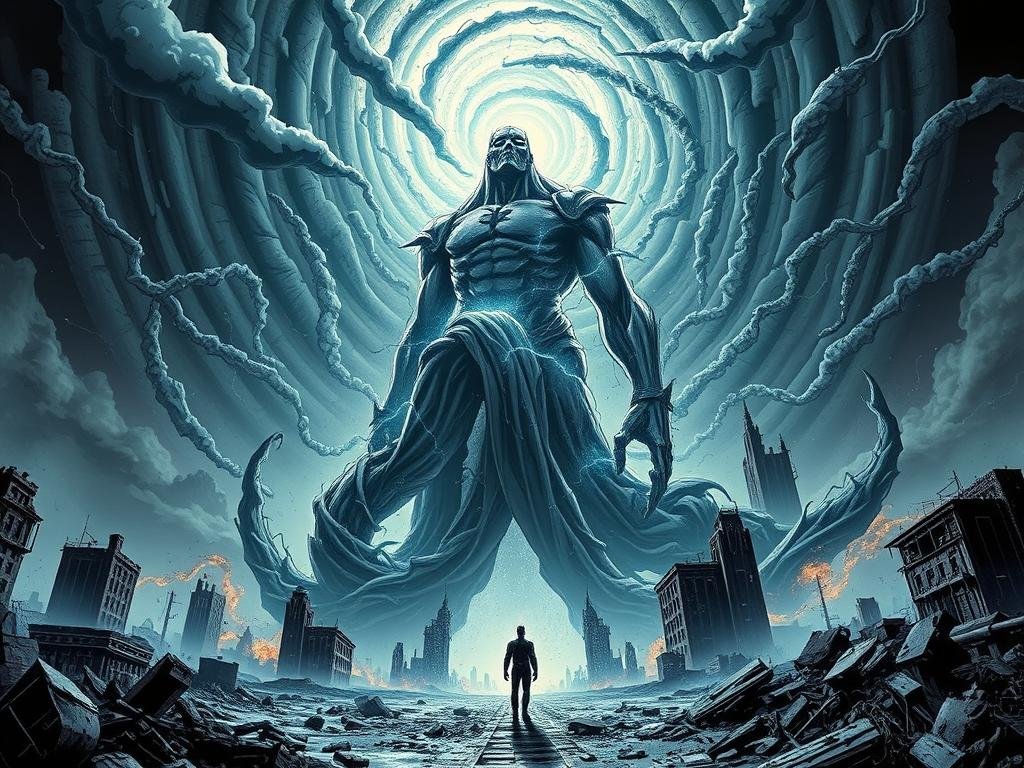
The Creative Powerhouse
Scott Snyder and Greg Capullo crafted a narrative that pushed the boundaries of DC Comics storytelling. Their collaboration has been nothing short of revolutionary, delivering a series that captures the imagination of comic book fans worldwide.
- Writer: Scott Snyder
- Artist: Greg Capullo
- Publication: DC Comics
Publication Journey
The seven-issue miniseries unfolded over a dramatic seven-month period, from June 16, 2020, to January 5, 2021. This carefully planned release schedule allowed readers to fully immerse themselves in the intricate storyline of the DC Comics event.
Core Concept Unveiled
At its heart, Dark Nights: Death Metal represented a pivotal moment in the DC multiverse. The series explored a reality-bending narrative that challenged everything readers thought they knew about their favorite heroes and the nature of existence itself.
A story that redefines the boundaries of heroism and destruction.
The narrative promised to reshape the entire DC universe, offering a transformative experience that would leave an indelible mark on comic book history. Scott Snyder and Greg Capullo delivered a saga that was both epic in scale and deeply personal in its exploration of heroism.
The Rise of Wonder Woman as the Central Hero
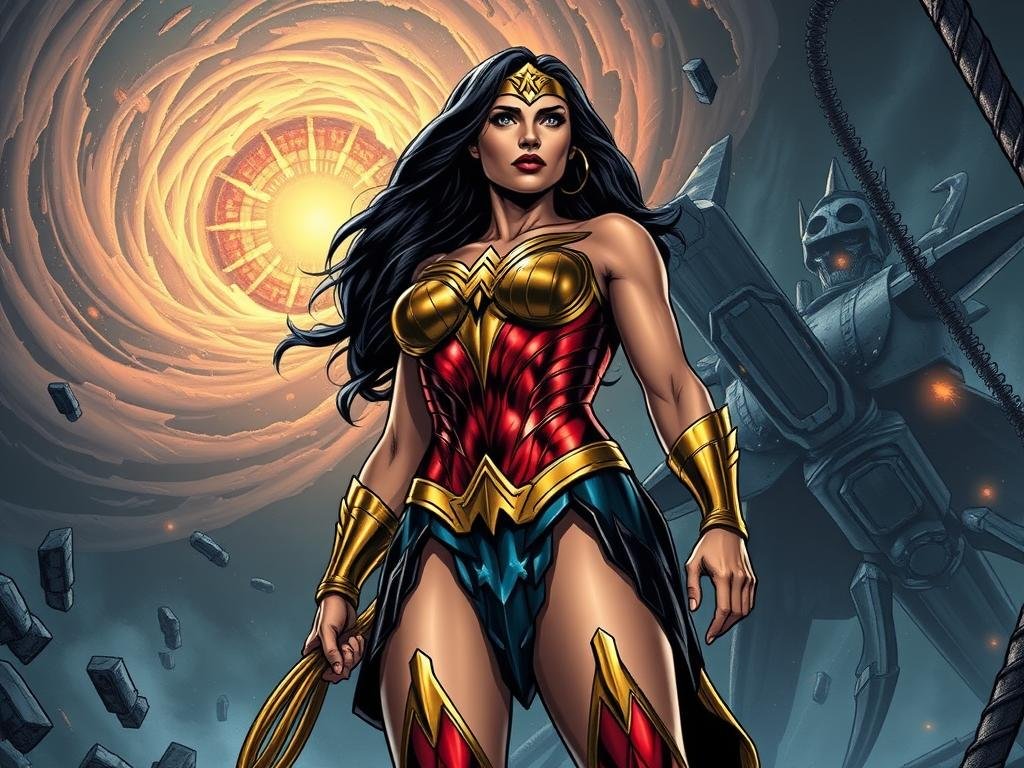
In the epic Dark Nights: Death Metal saga, Wonder Woman emerges as the pivotal DC Comics hero who transforms the entire narrative. Her journey goes beyond traditional superhero storytelling, positioning her as a critical force against cosmic destruction.
Diana’s role becomes extraordinary through several key strategies:
- Leading a multiverse resistance against overwhelming darkness
- Utilizing unprecedented strategic and combat skills
- Embodying hope during the most critical cosmic crisis
The DC Comics hero demonstrates remarkable adaptability by wielding unique weapons and forging unexpected alliances. Her chainsaw-wielding approach symbolizes her determination to fight against the Darkest Knight and Perpetua’s destructive plans.
| Challenge | Wonder Woman’s Response |
|---|---|
| Multiverse Threat | Strategic Resistance Leadership |
| Cosmic Destruction | Unbreakable Willpower |
| Enemy Supremacy | Innovative Combat Tactics |
Her transformation represents more than just survival – it’s about reimagining heroism in the face of absolute chaos. Wonder Woman becomes the linchpin that prevents total multiversal collapse, proving why she remains one of DC’s most powerful and inspirational characters.
The Batman Who Laughs’ Final Evolution
The DC Universe witnessed an unprecedented transformation when the Batman Who Laughs ascended to his most terrifying form. This nightmarish version of Bruce Wayne evolved beyond traditional villainy, becoming a cosmic threat that would reshape reality itself.
Transformation into the Darkest Knight
The Batman Who Laughs underwent a shocking metamorphosis, transcending his previous incarnations. His new identity as the Darkest Knight represented the ultimate corruption of heroism, combining Batman’s strategic brilliance with god-like destructive capabilities.
- Absorbed multiversal energy
- Gained reality-warping powers
- Became a cosmic-level threat
Impact on the DC Universe
The Darkest Knight’s emergence sent shockwaves across multiple dimensions. His ability to manipulate reality threatened the fundamental structure of existence, forcing heroes to confront an enemy unlike any they had faced before.
| Characteristic | Previous Form | Darkest Knight |
|---|---|---|
| Power Level | Multiverse Threat | Omnipotent Reality Manipulator |
| Motivation | Destruction of Heroism | Complete Multiversal Domination |
New Powers and Abilities
The Batman Who Laughs’ transformation granted him unprecedented capabilities. He could now reshape entire universes, challenge the fundamental laws of creation, and pose an existential threat to everything known and unknown.
A nightmare beyond imagination, the Darkest Knight represented the ultimate perversion of heroic potential.
With reality-warping powers that exceeded even the most powerful cosmic entities, the Darkest Knight became the most formidable antagonist in DC’s intricate multiverse.
Perpetua’s Role in Reshaping Reality
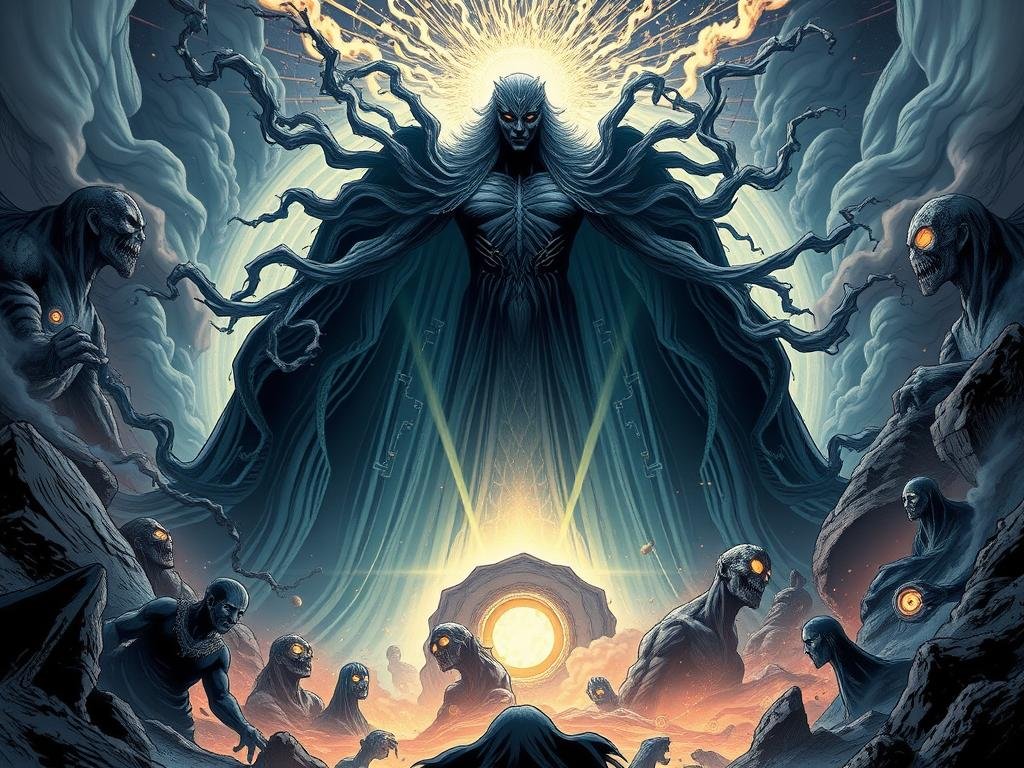
In the epic landscape of DC Comics, few villains have wielded as much cosmic power as Perpetua, the primordial being who stands at the center of reality-altering chaos. This DC Comics villain emerged as a force beyond comprehension, capable of fundamentally reshaping the entire multiverse with her extraordinary abilities.
Perpetua’s impact on the DC Universe can be understood through her key characteristics:
- Mother of the Monitor and Anti-Monitor
- Capable of creating and destroying entire universes
- Wielder of unprecedented reality-manipulation powers
Her strategic alliance with the Batman Who Laughs during the Dark Nights: Death Metal storyline demonstrated her intricate understanding of universal manipulation. Perpetua didn’t just threaten the multiverse – she sought to remake it entirely according to her dark vision.
| Cosmic Ability | Description |
|---|---|
| Reality Alteration | Universal-scale transformation |
| Crisis Energy Manipulation | Ability to reshape fundamental reality |
| Multiversal Destruction | Reducing 52 universes to mere fragments |
Her unprecedented power challenged the very foundations of the DC multiverse, turning her into a truly formidable DC Comics villain whose actions would resonate far beyond a single storyline.
Dark Nights Death Metal Consequences DC
The aftermath of Dark Nights: Death Metal transformed the DC Multiverse in ways fans could never have imagined. I watched as the comic landscape underwent a radical reconstruction, reshaping the fundamental structure of DC’s storytelling universe.
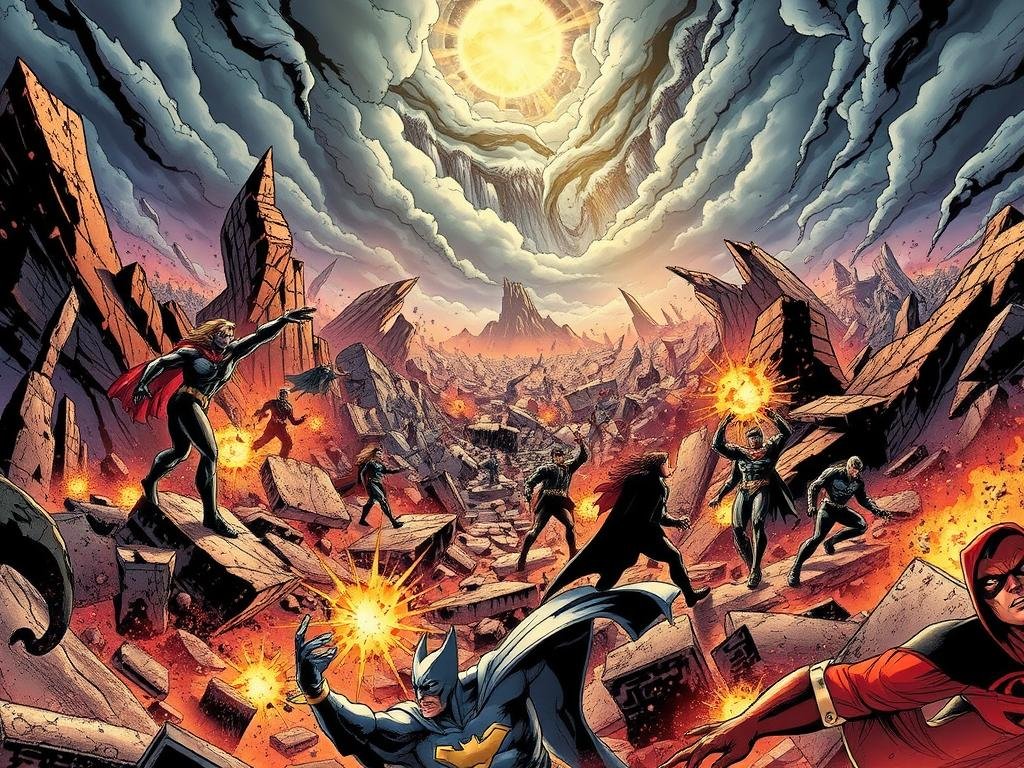
The dark nights death metal consequences DC impacted nearly every aspect of the comic book reality. Let me break down the most significant transformations:
- Multiverse structure dramatically reimagined
- Timeline continuity completely restructured
- Major character roles fundamentally altered
Reimagining the Multiverse Structure
DC Multiverse changes weren’t just cosmetic. The entire reality experienced a seismic shift that redefined how parallel universes interact. Only eight of the original 52 universes remained, creating a more concentrated and potentially more dynamic storytelling environment.
Timeline Continuity Disruption
The event wiped away previous continuity constraints, giving writers unprecedented freedom. Timelines that once seemed rigid now became fluid, allowing for more creative narrative exploration.
Character Transformations
Characters emerged from this crisis fundamentally changed. Some gained new powers, others assumed different roles in the restructured multiverse. The landscape became an exciting playground for character development and unexpected storylines.
The ripple effects of Dark Nights: Death Metal will continue to shape DC storytelling for years to come.
The Hands of Creation and Universal Reset
In the vast landscape of DC Comics cosmic entities, the Hands of Creation emerge as the ultimate architects of reality. These enigmatic beings represent the pinnacle of universal design, wielding power beyond comprehension.
During the Dark Nights: Death Metal storyline, they play a critical role in reshaping the multiverse, implementing a profound reset that transcends typical comic book narrative conventions.
The cosmic entities operate with a unique perspective, treating the multiverse like an intricate tapestry that can be rewoven at will. Their intervention represents more than a simple reboot—it’s a meticulous reconstruction of reality itself. Through their divine intervention, they systematically deconstruct and reimagine the DC universe, creating new pathways for storytelling.
- Cosmic scale of universal manipulation
- Precise recalibration of multiverse structures
- Preservation of key character developments
- Creation of narrative possibilities
My analysis reveals that these DC Comics cosmic entities approach universal reconstruction with surgical precision. They don’t simply erase existing narratives but carefully select which elements will survive the reset. This approach ensures that beloved character arcs and pivotal moments aren’t completely discarded.
| Cosmic Entity | Universal Role | Impact on Multiverse |
|---|---|---|
| The Monitor | Observational Entity | Tracks Multiversal Changes |
| The Anti-Monitor | Destructive Force | Challenges Existing Realities |
| The World Forger | Reality Architect | Designs Potential Universes |
By embracing this complex narrative approach, DC Comics demonstrates its commitment to evolving storytelling. The Hands of Creation represent more than just plot devices—they symbolize the endless potential of comic book mythology.
“In the hands of creation, every ending is truly a new beginning.” – DC Multiverse Philosophy
Significant Character Deaths and Transformations
The Dark Nights: Death Metal series dramatically reshaped the DC Comics landscape with unprecedented character deaths and superhero transformations. These pivotal moments not only shocked readers but fundamentally altered the multiverse’s core dynamics.
DC Comics character deaths struck at the heart of long-established narratives. Some of the most impactful transformations included:
- Entire superhero teams experiencing radical reimaginings
- Iconic characters facing permanent narrative shifts
- Unexpected survival stories amid cosmic destruction
Heroes Lost in the Crisis
The crisis claimed several prominent heroes, creating space for legacy characters to emerge. Superhero transformations became a central theme, with characters experiencing profound metamorphoses that challenged their traditional roles.
Villains’ Ultimate Fates
Villains experienced equally dramatic changes. Some found unexpected redemption, while others descended into more complex moral territories. The narrative explored the thin line between heroism and villainy, presenting multifaceted character arcs that defied traditional good-versus-evil paradigms.
The Death Metal event proved that in the DC multiverse, no character’s fate is truly predetermined.
These transformative events set the stage for future storytelling, ensuring that the DC universe would never be the same again.
The New DC Multiverse Structure
After the epic conclusion of Dark Nights: Death Metal, the DC Multiverse underwent a dramatic transformation that redefined comic book continuity. The cosmic landscape shifted, creating a more dynamic and interconnected storytelling platform for creators and readers alike.
The new DC Multiverse structure introduces a revolutionary approach to parallel worlds and alternate realities. I discovered that this redesign offers unprecedented flexibility for storytelling, allowing writers to explore multiple narrative possibilities without being constrained by previous continuity limitations.
- Infinite Earths reimagined with greater narrative potential
- Enhanced connectivity between different universe iterations
- More fluid boundaries between parallel realities
Key characteristics of this new multiverse include:
- A more flexible cosmic architecture
- Streamlined connections between different universes
- Expanded storytelling opportunities for creators
“The multiverse is no longer a constraint, but a canvas of infinite possibilities.” – DC Creative Team
Fans of the DC Multiverse can now expect more dynamic and interconnected storylines that honor the rich history of comic book continuity while pushing the boundaries of narrative exploration. This restructuring represents a bold new chapter in DC’s storytelling approach.
The reimagined multiverse provides writers with an expansive playground to craft intricate, cross-dimensional narratives that were previously impossible. From alternate versions of beloved heroes to completely new realities, the potential for groundbreaking storytelling has never been more exciting.
Impact on Future DC Storylines
The aftermath of Dark Nights: Death Metal has dramatically reshaped the landscape of DC Comics future events. As a comic book enthusiast, I’m excited to explore the incredible potential unleashed by this transformative storyline.
The series has strategically planted seeds for upcoming comic book storylines that promise to keep readers on the edge of their seats. Several key developments are set to drive the narrative forward:
- Multiverse Exploration: The restructured DC multiverse opens unprecedented storytelling opportunities
- Character Reinventions: Familiar heroes and villains will emerge with fresh perspectives
- Cosmic Narrative Arcs: Potential crossover events that challenge existing boundaries
Setup for Next Major Events
Creators have carefully crafted narrative threads that hint at potential future conflicts. The reimagined universe provides a blank canvas for innovative storytelling, allowing writers to push creative boundaries beyond traditional superhero narratives.
Unresolved Plot Threads
Several intriguing plot elements remain deliberately unresolved, creating anticipation for future storylines. These narrative gaps are intentional, designed to spark fan speculation and generate excitement about upcoming DC Comics future events.
The multiverse reset isn’t an ending—it’s a breathtaking new beginning for DC’s expansive comic book universe.
Reader and Critical Reception
The DC Comics event Dark Nights: Death Metal unleashed a storm of comic book reviews that captivated the fan community. Critics and readers alike found themselves swept up in the series’ audacious storytelling and visual spectacle.
Fan reactions revealed a mixed but predominantly positive response. The unique narrative approach struck a chord with many readers who appreciated the bold reimagining of the DC Multiverse. My analysis of various review platforms highlighted several key insights:
- Art quality received widespread praise for its intricate and dynamic designs
- The complex plot challenged but ultimately engaged most comic book enthusiasts
- Longtime DC fans appreciated the series’ respect for established mythology
Professional comic book reviews emphasized the series’ innovative approach to multiversal storytelling. Metal aesthetic and cosmic horror elements created a distinctive reading experience that set Death Metal apart from traditional superhero narratives.
The series represents a groundbreaking moment in DC’s narrative landscape, pushing boundaries and challenging reader expectations.
While some readers found the storyline overwhelming, the majority celebrated the creative team’s ambitious vision. The comic book reviews consistently highlighted the series’ ability to generate excitement and spark passionate discussions within the DC fan community.
Conclusion
Dark Nights: Death Metal has fundamentally reshaped the DC Comics landscape. As a passionate comic book reader, I’ve witnessed how this epic saga dramatically transformed the multiverse, creating unprecedented opportunities for storytelling and character development.
The dark nights death metal consequences DC experienced will resonate through future narratives for years to come.
The creative team behind this series has done more than just tell a story – they’ve reimagined the entire DC Comics future.
By breaking down existing barriers and reconstructing the multiverse, they’ve given writers and artists an expansive new playground to explore radical character arcs and unexpected storylines. The boundaries of what’s possible have been dramatically expanded.
From the intricate character transformations to the cosmic-level reset, this series represents a pivotal moment in comic book history.
Fans can expect a more dynamic, interconnected universe that honors classic storylines while pushing the boundaries of imagination. The multiverse now feels more alive and unpredictable than ever before.
As we look ahead, one thing is certain: the DC universe will continue to surprise and inspire. The groundwork laid by Dark Nights: Death Metal promises exciting adventures, unexpected character interactions, and storytelling that challenges our understanding of heroism and reality itself.
FAQ
Q: What is Dark Nights: Death Metal?
A: Dark Nights: Death Metal is a seven-issue miniseries by Scott Snyder and Greg Capullo that serves as the epic conclusion to a five-year saga exploring the Dark Multiverse. It’s a cosmic event that fundamentally reshapes the DC Universe, featuring an ultimate battle between light and dark with the fate of every reality hanging in the balance.
Q: Who are the key characters in Death Metal?
A: The primary protagonists include Wonder Woman as the central hero, who leads the charge against darkness, and the Batman Who Laughs, who transforms into the terrifying Darkest Knight. Perpetua, the mother of the Monitor and Anti-Monitor, also plays a crucial role in manipulating reality.
Q: How does Death Metal change the DC Multiverse?
A: The event completely restructures the multiverse, creating a new cosmic landscape with multiple interconnected universes. It smooths out continuity issues, introduces new realities, and provides a fresh canvas for storytelling while respecting the rich history of DC Comics.
Q: What happened to the Batman Who Laughs?
A: The Batman Who Laughs evolves into the Darkest Knight, gaining powers similar to Dr. Manhattan that allow him to reshape reality. He becomes a god-level threat attempting to create his own nightmarish multiverse, pushing the boundaries of villainy in the DC Universe.
Q: What role does Wonder Woman play in the story?
A: Wonder Woman emerges as the lynchpin of the entire saga, becoming a chainsaw-wielding hero who embodies hope and determination. She leads the charge against the forces of darkness, playing a pivotal role in saving the multiverse and redefining heroism.
Q: How did fans and critics receive Dark Nights: Death Metal?
A: The reception was mixed but largely positive. Critics praised the series for its audacious storytelling, mind-bending art, and satisfying conclusion. Fans appreciated its bold approach and respect for DC’s history, though some found the cosmic narrative challenging to follow.
Q: What are the Hands of Creation?
A: The Hands of Creation are cosmic entities that oversee the entire multiverse. In Death Metal, they play a crucial role in the final act, essentially acting as ultimate judges who determine the fate of all reality and facilitate a carefully crafted universal reset.
Q: What makes Death Metal different from other DC crisis events?
A: Unlike previous crisis events, Death Metal offers a more comprehensive reimagining of the DC Universe. It doesn’t simply reboot continuity but creates a new multiverse structure that allows for infinite storytelling possibilities while maintaining connections to existing DC mythology.
Q: When was Dark Nights: Death Metal published?
A: The series was published from June 2020 to January 2021, spanning seven issues and multiple tie-in comics that explored the broader implications of the event.
Q: What happens to existing DC characters after Death Metal?
A: Many characters emerge changed, with new roles, relationships, and sometimes powers. Some beloved characters make ultimate sacrifices, while others find new paths. The event sets up exciting character developments and potential future storylines across the DC Universe.
